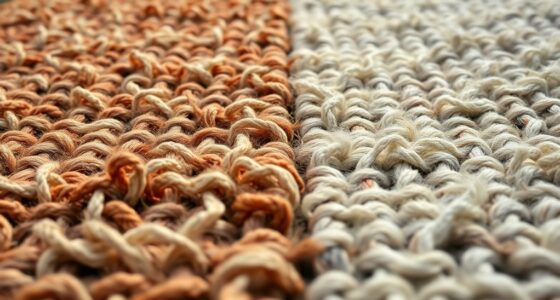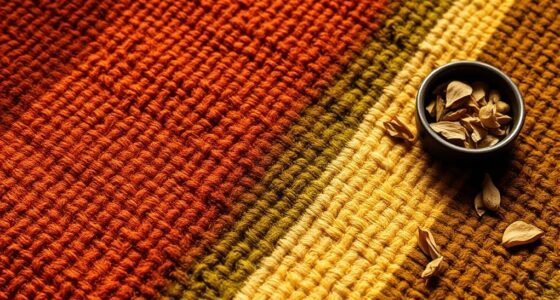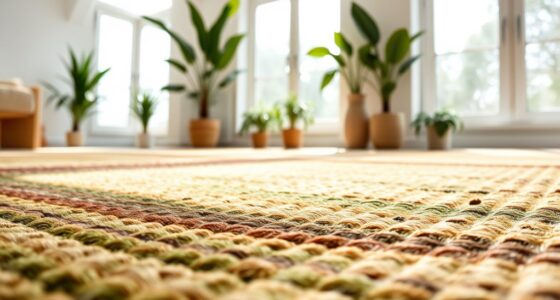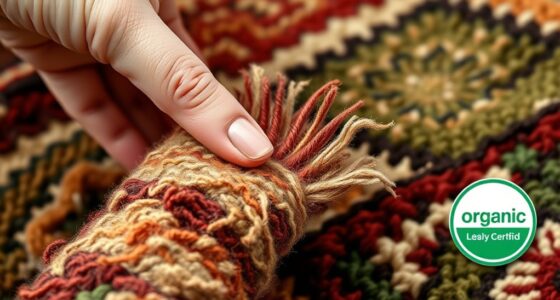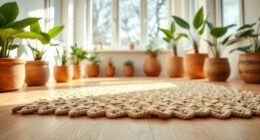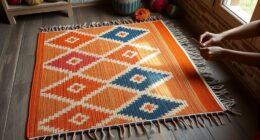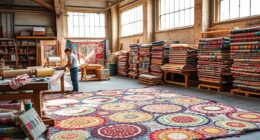When natural dyes age, they develop either a patina or fade, each affecting their appearance uniquely. Patina forms gradually through chemical reactions with environmental elements, creating a rich, layered look that adds character and depth. Fading, however, results from exposure to light, heat, and moisture, causing colors to become dull or disappear uniformly. By understanding how environment influences these processes, you can better care for and preserve the natural beauty of dyed textiles; more tips await as you continue.
Key Takeaways
- Patina develops organically over time, adding character and depth, whereas fading results from chemical breakdown and loss of vibrancy.
- Environmental factors like sunlight and humidity accelerate fading, while patina formation is influenced by chemical reactions with air and pollutants.
- Patina offers a protective layer that stabilizes dyes, while fading diminishes color intensity and uniformity across the surface.
- Proper care, such as gentle cleaning and controlled storage, can preserve patina and slow fading of natural dyes.
- The aesthetic appeal differs: patina enhances aged authenticity, whereas fading emphasizes freshness but reduces visual vibrancy.
What Is Patina and How Does It Form?
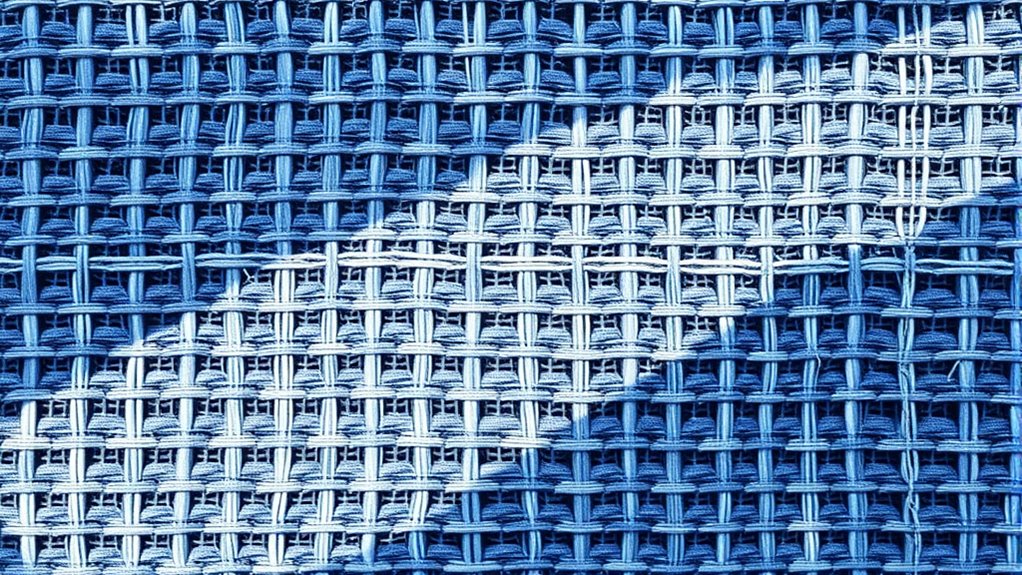
Patina is a natural surface layer that develops over time on materials like metal, wood, or stone, giving them a distinctive aged look. It forms through a chemical reaction between the material and environmental elements, such as air, water, and pollutants. This process causes mineral deposits to accumulate on the surface, creating a thin, often colorful film. For example, copper develops a green patina called verdigris when exposed to moisture and oxygen, resulting from the formation of copper salts. Similarly, iron rusts with exposure, and mineral deposits build up on stones. These transformations are not just aesthetic; they protect the underlying material from further corrosion. Color stability is also affected by the ongoing chemical reactions, influencing how the patina evolves over time. Patina, hence, is both a sign of age and a natural protective layer stemming from ongoing chemical reactions.
The Process Behind Color Fading in Natural Dyes
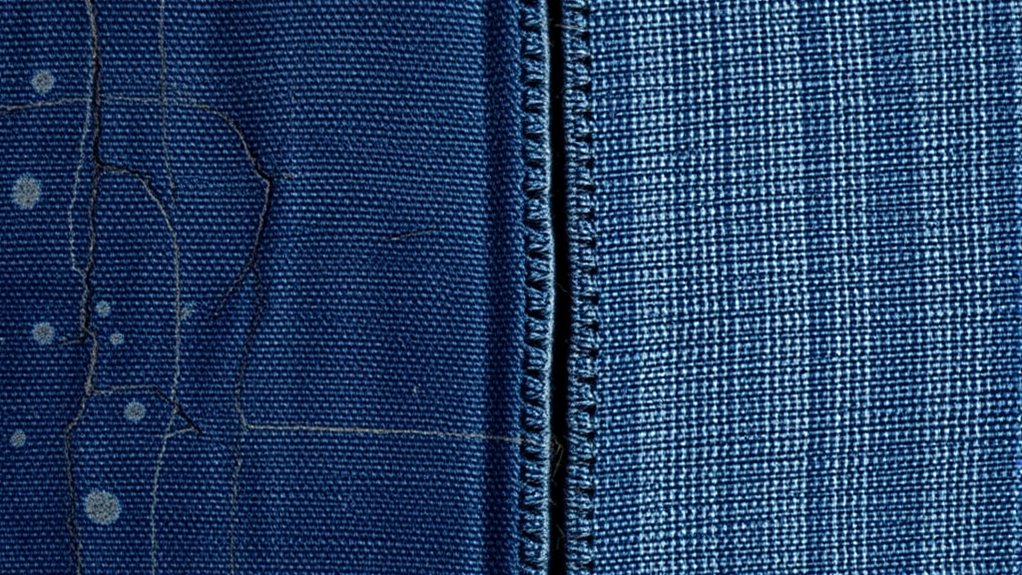
Natural dyes tend to fade over time due to exposure to environmental factors and the inherent properties of the pigments themselves. This fading results from chemical reactions triggered by light, heat, and moisture, which compromise dye stability. When exposed to sunlight, UV rays initiate photo-degradation, breaking down dye molecules. Similarly, humidity encourages hydrolysis, accelerating color loss. Over time, these processes cause the dye molecules to degrade or change, diminishing vibrancy. Environmental conditions and the chemical properties of natural dyes play a significant role in how quickly the colors change over time. Additionally, the application methods and the type of mordants used can influence the durability of natural dyes. Research indicates that the resistance of dyes to environmental factors varies based on their molecular structure, affecting longevity. Factors like dye composition also contribute to how well a dye withstands aging and environmental stressors.
Factors That Influence Aging of Natural Dyes
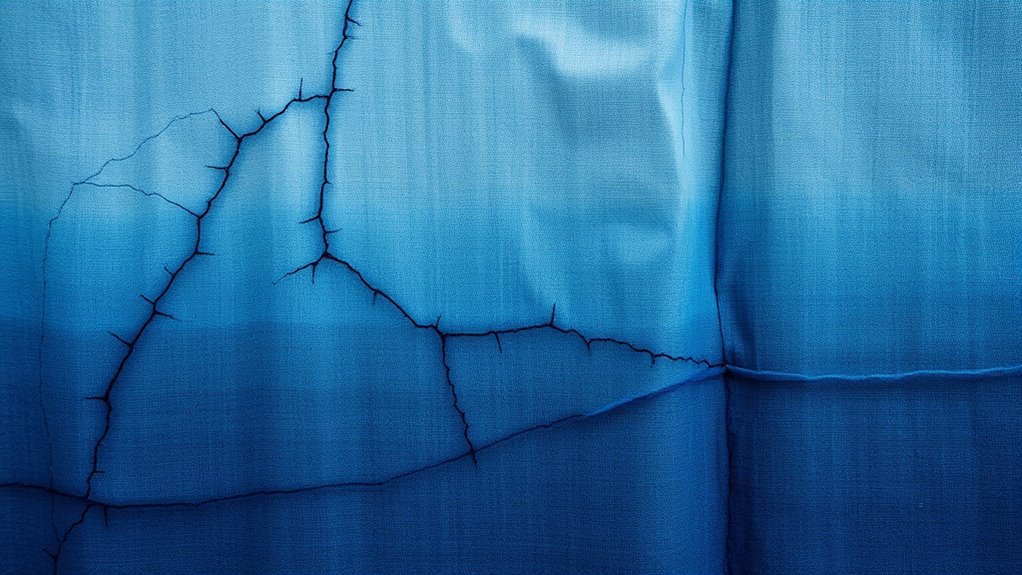
Various environmental and chemical factors directly impact how natural dyes age over time. Your dye’s plant origin influences its vulnerability; some plant-derived colors are more susceptible to fading or patina development. Chemical stability also plays a key role—dyes with higher stability resist degradation despite exposure to light, moisture, or pollutants. Sunlight accelerates aging, breaking down dye molecules, especially in less stable dyes. Humidity and temperature fluctuations can cause expansion or contraction in fibers, affecting dye bonds. Additionally, pollutants like acids, alkalis, or airborne chemicals can chemically alter dyes, speeding up deterioration. Understanding these factors helps you predict how natural dyes will age, allowing you to choose the right plant sources and treatments to enhance longevity and maintain desired aesthetic qualities over time.
Comparing Patina Development and Fading Effects
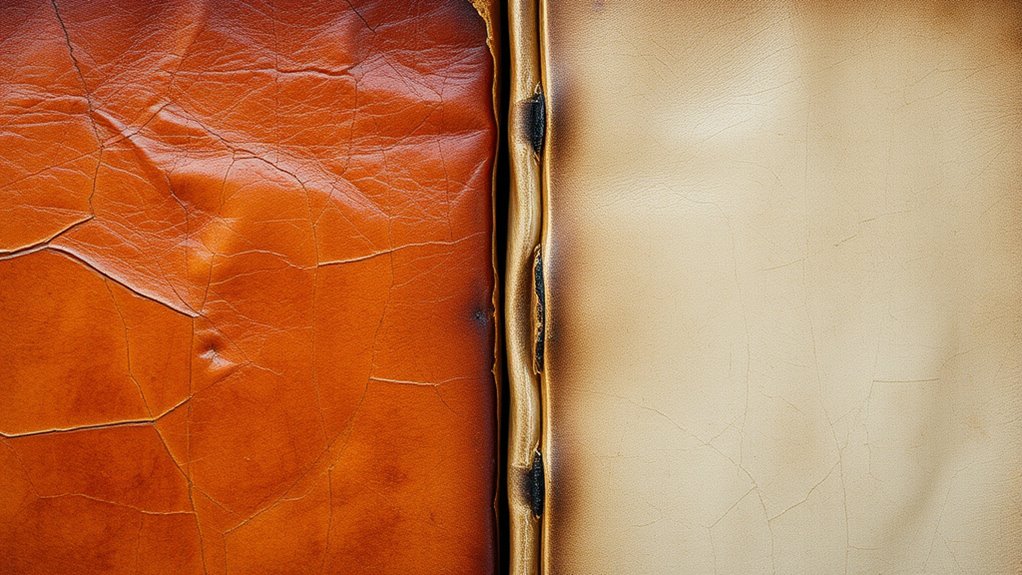
You’ll notice that patina develops organically, adding character and depth over time, unlike fading, which causes a uniform loss of color. Patina’s evolution can enhance the piece’s beauty, while fading often diminishes its vibrancy. Considering longevity and wear helps you understand how these effects influence the overall aging process. Proper application timing of protective coatings can also impact how well a piece ages naturally, especially when considering the types of dyes used in the process. Being aware of sound design techniques can help you appreciate how different methods influence the preservation and aging of materials. Additionally, understanding the chemical interactions involved in dye aging can provide deeper insight into the longevity of natural dyes, and how different tuning techniques may affect the durability of painted surfaces.
Patina’s Organic Evolution
As patina forms over time, it undergoes a dynamic process that balances development and fading, shaping the unique character of each piece. Natural color variation emerges as the patina deepens, adding depth and richness that highlight the material’s organic roots. Unlike fading, which reduces vibrancy uniformly, patina’s evolution reflects a complex interplay of environmental factors and natural aging. Its chemical stability ensures that, once formed, this layer remains relatively enduring, resisting rapid deterioration. This stability allows the patina to develop gradually, enhancing the piece’s visual story without compromising its integrity. You’ll notice that, over years, the patina’s organic evolution creates a nuanced, authentic look that no artificial process can replicate, making each artifact uniquely beautiful and full of history. Additionally, understanding the rustic materials involved reveals how natural elements contribute to the authentic aging process of these pieces. The natural aging process also benefits from the vetted materials used, which are selected for their durability and ability to develop a genuine patina over time. Moreover, the natural weathering process plays a significant role in shaping the final appearance of aged items, further enhancing their uniqueness. Recognizing the chemical composition of materials helps explain how these processes occur at a molecular level, contributing to their overall stability and appearance. Furthermore, environmental exposure influences the rate and character of patina development, making each piece one-of-a-kind.
Fading’s Uniform Loss
While patina develops gradually with complex variations, fading tends to cause a more uniform loss of color. This occurs because natural dye chemistry often results in consistent pigment breakdown over time, leading to even fading across the fabric. To minimize this, applying effective colorfastness techniques can help preserve vibrancy. Fading typically affects the entire surface equally, unlike patina, which introduces irregularities. Understanding how natural dyes respond to light, heat, and washing can guide you in choosing dyes and treatments that reduce uniform fading. Additionally, colorfastness protocols can significantly enhance the durability of natural dyes against environmental factors.
Longevity and Wear
Patina development and fading influence the longevity and wear of natural dyes in distinct ways. Patina, often seen on natural fiber textiles from botanical sources, adds a protective layer that can enhance durability over time. Fading, however, signals pigment loss, reducing vibrancy and potentially weakening the material. With patina, wear becomes more nuanced, blending age and character. In contrast, fading can lead to a more uniform but less lively appearance. Your choice impacts how your items age: patina may extend the lifespan and deepen beauty, while fade emphasizes freshness but may compromise durability. Environmental factors also play a significant role in how natural dyes age, affecting whether patina or fading predominates.
How Environmental Conditions Affect Dye Aging
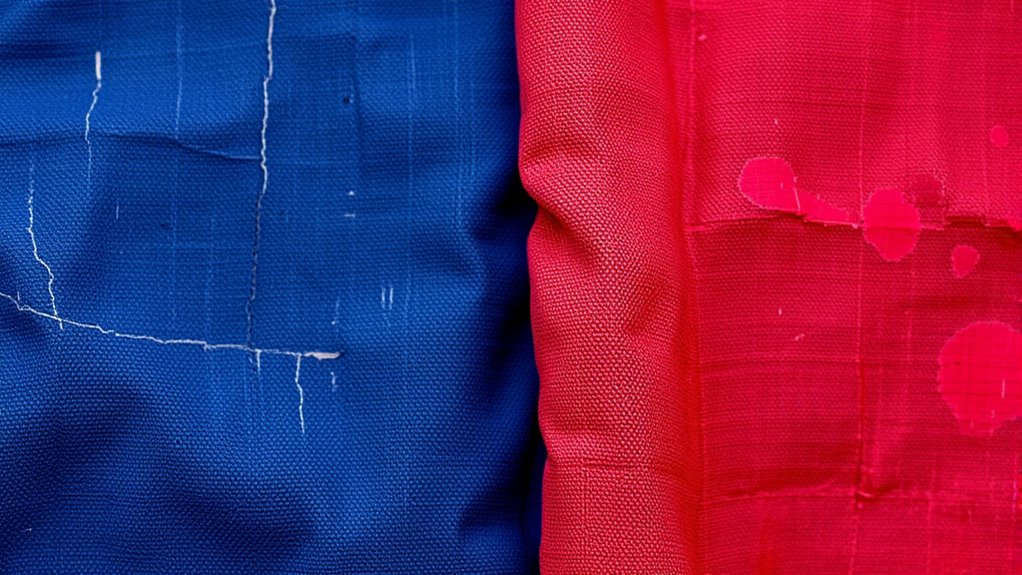
Environmental conditions play a crucial role in how natural dyes age over time. Exposure to sunlight, humidity, and temperature fluctuations can trigger chemical reactions within the dye and textile fibers. UV rays accelerate fading by breaking down dye molecules, leading to a loss of vibrancy. High humidity promotes mold growth and can weaken the textile fibers, causing deterioration that affects dye stability. Conversely, dry environments help preserve colors, but extreme dryness may make fibers brittle. Temperature swings can speed up chemical reactions, resulting in uneven fading or patina development. By understanding these factors, you can better anticipate how your textiles will change over time and take steps to minimize damage from environmental influences. Proper storage and controlled conditions are essential for maintaining the beauty of natural dyes.
Techniques to Preserve Patina and Minimize Fade
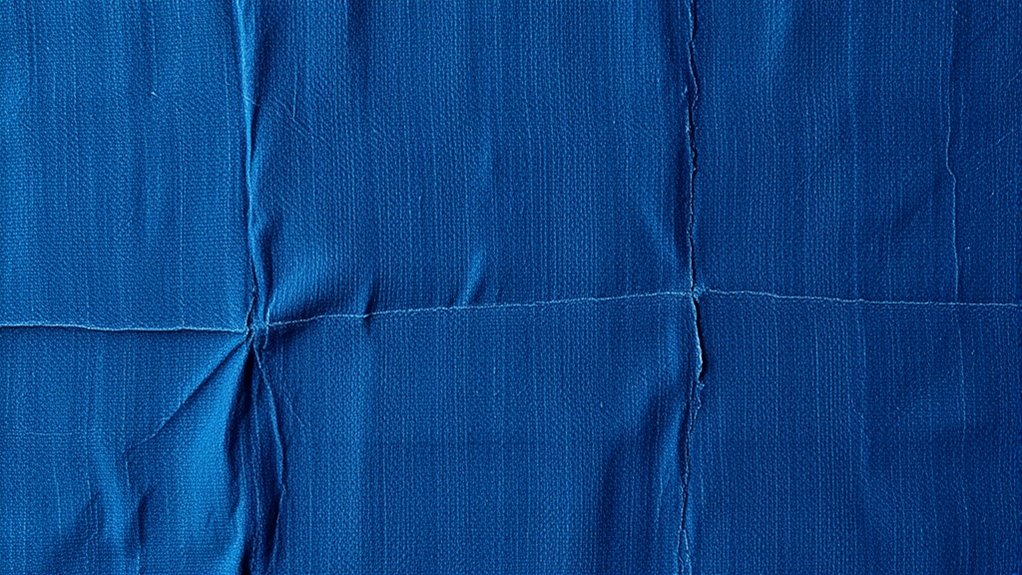
To keep your natural dyes vibrant and preserve their unique patina, you should adopt specific techniques. Regular cleaning with gentle methods, proper storage, and careful handling all play essential roles. Implementing these practices helps minimize fade and maintains the beauty of your dyed items over time.
Regular Cleaning Practices
Regular cleaning is essential for maintaining the beauty and integrity of natural dyes, but it must be done carefully to preserve the patina and prevent fading. Overzealous or harsh cleaning can trigger unwanted chemical reactions that compromise dye stability. Use gentle methods to avoid disturbing the delicate surface. Opt for soft cloths and mild, pH-neutral cleaners to prevent damaging the dye molecules. Regularly removing dust and dirt minimizes the risk of buildup that can accelerate fading. Be cautious with water and avoid excessive moisture, which can weaken dyes over time. Consistent, gentle cleaning helps sustain the original vibrancy and patina, ensuring your pieces age gracefully.
- Use soft, non-abrasive tools
- Avoid harsh chemicals or bleach
- Test cleaning solutions on small areas first
- Limit water exposure to prevent dye breakdown
- Schedule regular, light cleanings to reduce buildup
Proper Storage Methods
Proper storage is essential for maintaining the vibrancy and patina of natural dyes. Understanding natural dye chemistry helps you create ideal storage conditions, preventing fading and unwanted changes. Keep your dyed textiles away from direct sunlight, which can break down dye molecules and accelerate fading. Store items in a cool, dry place with stable humidity to preserve color integrity and prevent mold. Use acid-free, airtight containers to protect against air exposure that can cause oxidation and color loss. When considering dye extraction techniques, ensure that any residual moisture is fully dried before storage. Properly sealed and protected storage minimizes exposure to light, air, and fluctuating temperatures, helping your natural dyes age gracefully while retaining their original beauty.
Gentle Handling Techniques
Handling your dyed textiles with care is essential for preserving their patina and preventing fading. Using proper handling techniques minimizes stress on the fibers and helps maintain dye preservation over time. Always wash your textiles gently, avoiding harsh scrubbing or agitation that can damage the surface. When moving or displaying items, support them fully to prevent stretching or tearing. Keep textiles away from direct sunlight and extreme temperatures, which accelerate fading. Store them flat or rolled to avoid creases that can weaken fibers. Regularly inspect for signs of wear and handle with clean hands to prevent oils and dirt from affecting the dye.
- Use soft gloves or clean hands during handling
- Keep textiles away from direct sunlight and heat sources
- Support objects fully to prevent stress
- Store in a cool, dry environment
- Wash with gentle, dye-preserving detergents
Enhancing the Beauty of Aged Natural Dyes
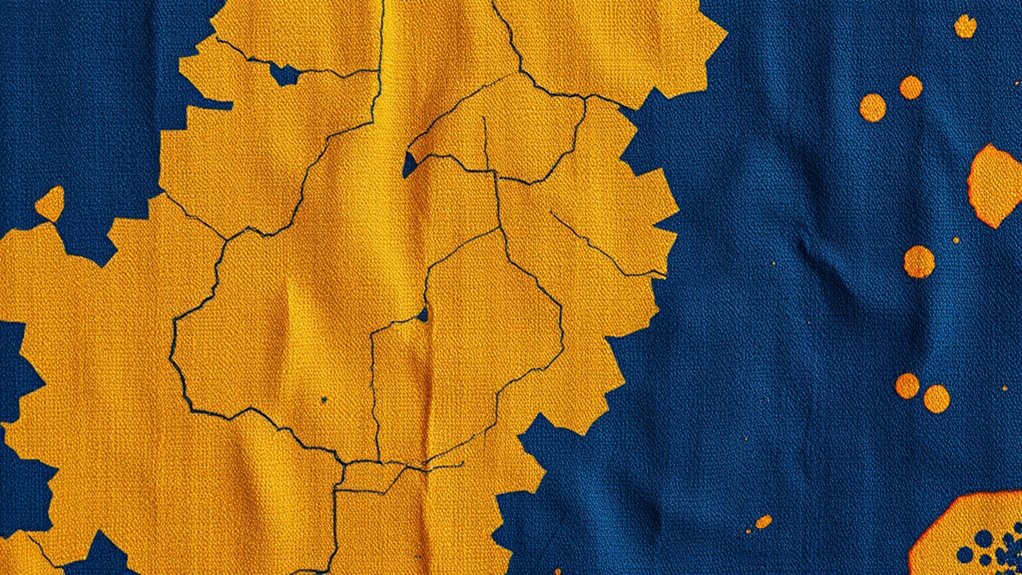
As natural dyes age, their colors often deepen and acquire unique, nuanced qualities that can enhance their visual appeal. To honor their historical significance, consider framing aged textiles as cultural artifacts that tell stories. You might display or restore pieces to highlight their patina, emphasizing the rich history embedded in the color shifts. Enhancing their beauty involves respecting the dye’s original intent and recognizing its cultural symbolism. By avoiding over-restoration, you preserve the authenticity and depth that aging imparts. Using gentle cleaning methods and appropriate lighting can bring out the subtle variations in hue, allowing the natural patina to shine. Celebrating the aged dye’s character not only respects its history but also elevates its aesthetic value, turning aging into an intentional feature of timeless beauty.
Practical Tips for Caring for Dyed Textiles Over Time
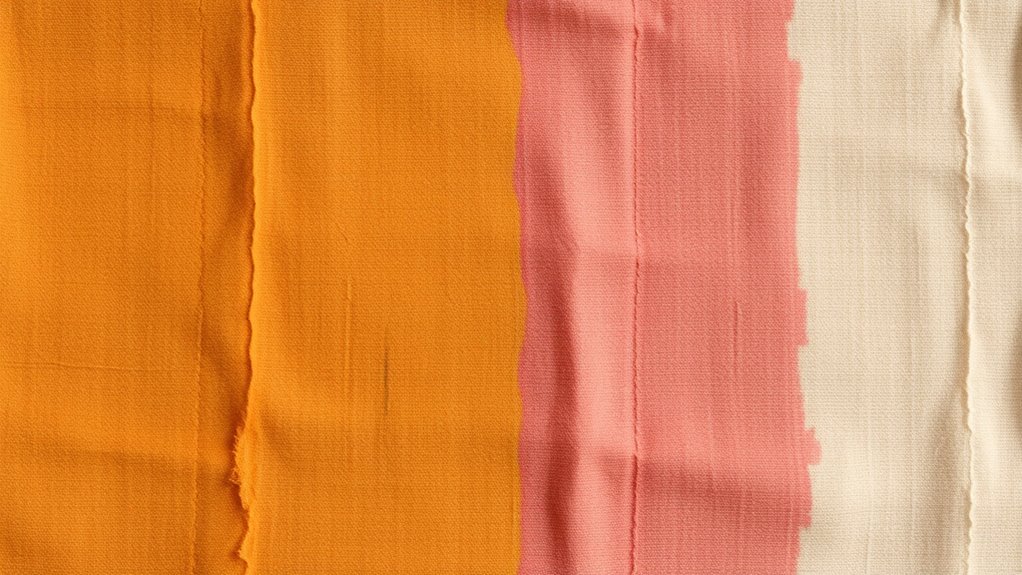
Caring for your dyed textiles over time requires consistent attention to protect their vibrant hues and delicate fibers. To maintain dye stability and promote color enhancement, handle your textiles gently and avoid exposure to harsh light, heat, or moisture. Store them in a cool, dark place to prevent fading and deterioration. Regularly inspect for signs of wear, and clean with mild, pH-neutral detergents to preserve dye integrity. When washing, turn garments inside out to minimize abrasion. Consider using protective covers or storage containers to reduce environmental impact. Proper care helps your textiles age gracefully, showcasing their natural beauty and patina without sacrificing dye stability.
- Keep away from direct sunlight to prevent fading
- Use gentle detergents for cleaning
- Store in a cool, dry environment
- Avoid frequent washing to preserve dye
- Rotate textiles to prevent uneven aging
Frequently Asked Questions
Can Natural Dyes Be Restored After Significant Fading or Patina Development?
When tackling dye restoration after significant fading or patina, you’ll find that fading isn’t always fully reversible. Natural dyes often develop a patina that adds character, but if you want to reverse fading, gentle re-dyeing can help restore vibrancy. Keep in mind, some fading may be semi-permanent, so understanding fading reversibility is key. Always test small areas first to ensure the best results without damaging your piece.
Are Certain Natural Dyes More Resistant to Fading and Patina Formation?
Like a sturdy tree standing tall, some natural dyes resist fading better over time. You’ll find that dyes with higher chemical stability withstand environmental factors like sunlight and moisture, making them more resistant to patina formation and fading. Dyes derived from indigo or madder tend to age gracefully, maintaining their vibrancy. Choosing dyes with strong chemical bonds helps your textiles stay beautiful longer, even under challenging conditions.
How Do Different Fiber Types Influence Natural Dye Aging?
Different fiber types markedly influence natural dye aging through fiber interactions and dye penetration. You’ll notice that protein fibers like wool and silk tend to hold dyes better, resulting in richer colors that age gracefully with a patina. In contrast, plant fibers like cotton or linen often experience more fading because their structure limits dye penetration. Understanding these fiber interactions helps you predict how your dyed textiles will age over time.
Is Artificial Aging Possible to Replicate Natural Patina Effects?
You can achieve artificial aging through chemical treatments that mimic natural patina effects. By applying controlled chemical processes, you can accelerate the aging process, creating a patina that resembles naturally aged dyes. This method allows you to customize the look and intensity, giving new items an authentic, aged appearance quickly. While it’s not identical to natural aging, artificial aging offers a practical way to replicate patina effects with consistent results.
What Are the Cultural or Historical Significances of Patina in Natural Dyes?
You might find that patina in natural dyes holds deep cultural symbolism, representing tradition and the passage of time. Historically, it’s seen as a mark of authenticity and craftsmanship, often preserved to honor cultural heritage. By maintaining patina, you contribute to historical preservation, allowing future generations to appreciate the artistry and cultural significance embedded in aged textiles. Patina isn’t just aging; it’s a visual story of history and cultural identity.
Conclusion
Understanding how natural dyes age helps you appreciate their unique beauty. For example, if you dye a piece of linen and let it develop a rich patina over time, you’ll see its character deepen naturally. By controlling environmental factors and using gentle care methods, you can enjoy the evolving colors without unwanted fade. Embrace the aging process as part of the textile’s story, enhancing its charm and value with each passing year.


